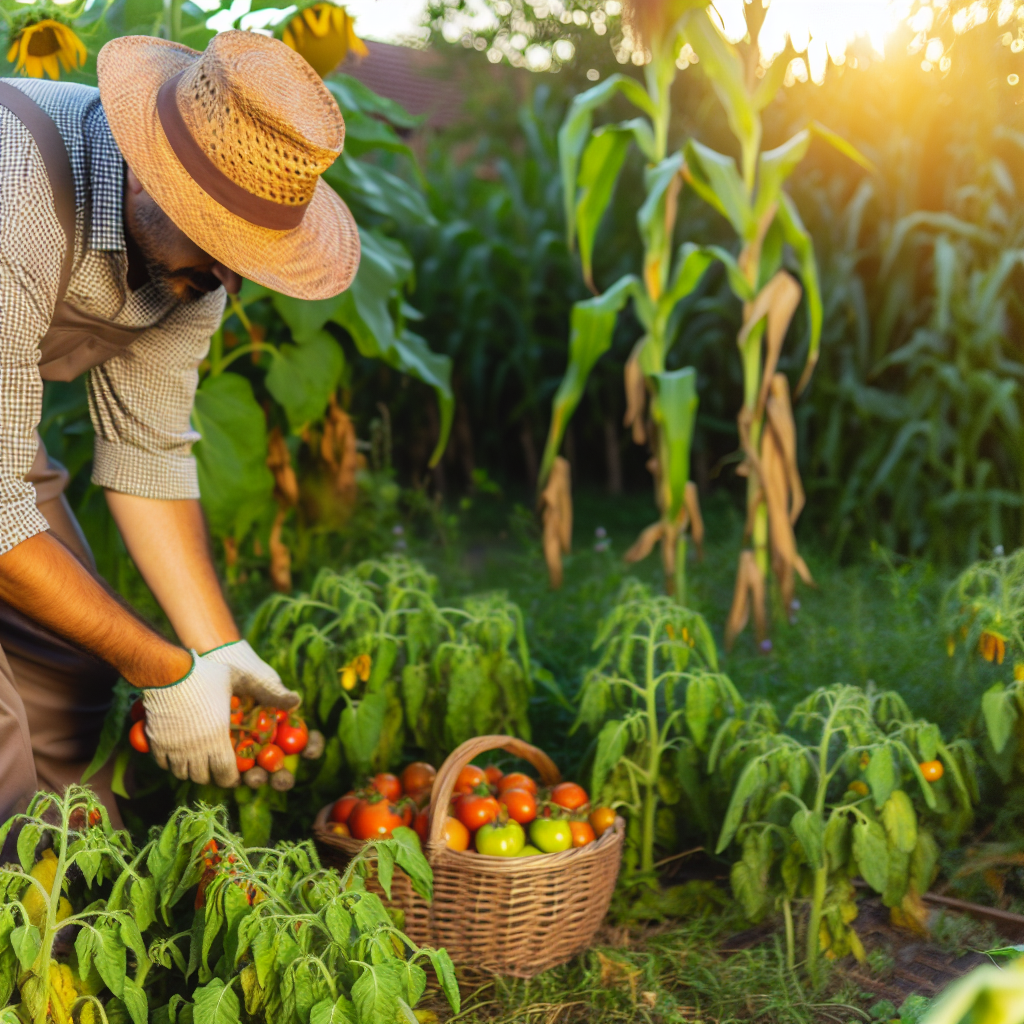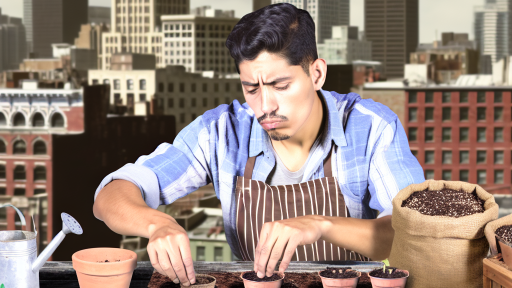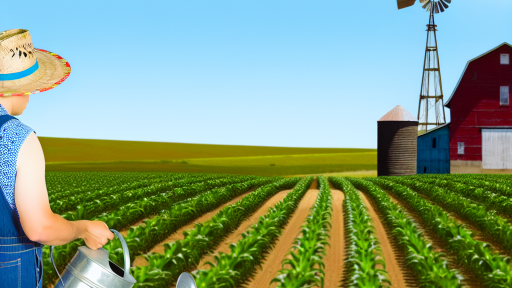Understanding the Importance of Timing in Harvesting
Significance of Harvest Timing
Harvesting at the right moment is crucial for optimal yield.
It directly affects the flavor, texture, and nutritional value of your produce.
Additionally, proper timing helps prevent losses due to overripeness.
Consequently, understanding the growth cycle of plants is essential.
Identifying Maturity Indicators
Different crops have unique maturity signs to look for.
For example, tomatoes should be full-colored and slightly soft to the touch.
Beans should snap easily when bent, indicating they are ready for harvest.
Furthermore, squash should have a hard rind before picking.
Observing these signs can lead to better harvest outcomes.
Impact of Weather Conditions
Weather plays a significant role in harvesting decisions.
Rain often softens soil, making it difficult to reach produce.
Moreover, frost can damage sensitive crops, necessitating timely harvesting.
Therefore, it is wise to check forecast conditions before harvesting.
Optimal Time of Day for Harvesting
The time of day also influences the quality of your harvest.
Harvesting in the morning can help retain moisture and crispness.
Transform Your Agribusiness
Unlock your farm's potential with expert advice tailored to your needs. Get actionable steps that drive real results.
Get StartedIn contrast, picking in the afternoon can lead to wilting.
Thus, aiming for early hours maximizes freshness and quality.
Consequences of Poor Timing
Delaying harvest can lead to various negative effects.
Overripe produce may attract pests and diseases.
Moreover, flavors can decline and textures may become unappealing.
In some cases, the nutritional content can diminish over time.
Thus, recognizing and acting on the right timing is vital.
Identifying Harvest Readiness
Signs of Ripeness in Common Crops
Harvesting at the right time maximizes flavor and nutrition.
Each crop has specific indicators of ripeness.
Knowing these signs enhances your harvest success.
Vegetables
Look for color changes in vegetables like tomatoes and peppers.
Tomatoes turn from green to a deep red when ripe.
Peppers also change from green to yellow, orange, or red.
Check size; cucumbers should be firm yet tender.
Most beans become plump and firm when harvested at their peak.
Fruits
Fruits also display distinct signs of ripeness.
Monitor the softness of peaches and avocados as they ripen.
Strawberries should be bright red without green leaves remaining.
Melons easily yield to gentle pressure when they are ripe.
Herbs
Herbs provide rich flavors at different growth stages.
Basil leaves show deep green colors when ready for harvest.
Mint releases strong aromas, indicating it is ready for cutting.
Root Vegetables
Check root vegetables for size and freshness.
Carrots typically reach optimal flavor and sweetness when around an inch in diameter.
Showcase Your Farming Business
Publish your professional farming services profile on our blog for a one-time fee of $200 and reach a dedicated audience of farmers and agribusiness owners.
Publish Your ProfilePotatoes should be harvested when the vine dies back completely.
Tips for Testing Ripeness
Use the feel test to judge firmness in fruits and vegetables.
Smell can also indicate ripeness, especially in fruits.
Conduct taste tests for accurate ripeness evaluation.
Environmental Factors
Temperature and moisture levels affect crop ripeness.
Cooler temperatures may delay ripening for some crops.
Consistent watering also ensures even ripening.
Timing the Harvest
Harvest in the early morning for optimal freshness.
Timing also depends on the specific crop’s growth cycle.
Monitor your crops regularly to catch the ideal harvesting window.
Tools and Equipment for Efficient Organic Harvesting
Essential Hand Tools
Hand tools play a vital role in organic harvesting.
They enable you to access plants without disturbing the ecosystem.
Common tools include hand pruners, trowels, and weeders.
Investing in high-quality tools increases efficiency and comfort.
Moreover, keep these tools sharp and clean for optimal performance.
Harvesting Gear
Wearing appropriate gear can enhance your harvesting experience.
Consider using gloves to protect your hands from thorny plants.
A wide-brimmed hat shields you from the sun while working.
Comfortable shoes with good traction ensure safety in the garden.
Lastly, use a gardening apron to hold tools and collect produce.
Equipment for Larger Yields
For larger gardens, consider investing in specialized equipment.
Harvesters or tools like sickles simplify the gathering process.
Tractors and tillers can aid in managing extensive organic farms.
Automated equipment can save time and effort during peak seasons.
However, always choose equipment designed for organic practices.
Storage Solutions
Post-harvest storage is essential for maintaining produce freshness.
Use breathable containers to prevent moisture buildup.
Cool storage areas extend the life of your harvested crops.
Labeling containers helps you easily identify different produce.
Regularly check inventory to use older items first.
Cleaning and Sanitation
Maintain hygiene by cleaning tools and equipment regularly.
Use organic-approved solutions to sanitize harvesting gear.
This practice prevents cross-contamination and protects crops.
Implement a cleaning schedule to ensure consistency.
Moreover, educate helpers on proper sanitation techniques.
Explore Further: Container Gardening Setup Tips For Small Farms
Best Practices for Handling and Transporting Harvested Produce
Preparation Before Harvesting
Gather all necessary tools before beginning the harvest.
Use clean and sharp tools to minimize damage to the plants.
Wear gloves to protect your hands while handling the produce.
Plan your harvesting strategy to ensure efficiency.
Showcase Your Farming Business
Publish your professional farming services profile on our blog for a one-time fee of $200 and reach a dedicated audience of farmers and agribusiness owners.
Publish Your ProfileHarvesting Techniques
Learn the best time to harvest each type of produce.
Use a gentle twisting motion when picking fruits to avoid bruising.
Cut vegetables with care, ensuring clean cuts.
Avoid pulling plants out of the ground to prevent damage.
Handling Harvested Produce
Handle the produce with care during collection.
Use baskets or crates lined with soft material to cushion the produce.
Avoid overloading containers to prevent crushing lower layers.
Sort the harvested items immediately to discard any damaged produce.
Transporting Harvested Produce
Transport products quickly to maintain freshness.
Ensure the transport vehicle is clean and dry before loading.
Use refrigeration or insulated containers for sensitive items.
Keep produce in the shade during transportation to avoid heat exposure.
Post-Harvest Care
Wash the harvested produce gently to remove dirt or debris.
Store products in a cool, dry location to maximize shelf life.
Regularly check the stored produce for signs of spoilage.
Recycle or compost any inedible parts of the harvest responsibly.
Delve into the Subject: Companion Planting Strategies For Container Gardens
Post-Harvest Care: Cleaning and Storing Organic Vegetables
Importance of Post-Harvest Care
Post-harvest care significantly impacts the quality of your organic vegetables.
Proper cleaning and storage methods extend the freshness of your harvest.
Additionally, these practices help maintain nutritional value over time.
Cleaning Your Harvest
Begin by gently washing your vegetables after harvesting.
Use clean, cold water to remove any soil and residues.
A soft brush can help clean tougher vegetables like potatoes.
Ensure you rinse all surfaces, including harder-to-reach spots.
Pat dry using a clean towel or allow them to air dry.
Handling Leafy Greens
For leafy greens, soak them briefly in water.
This technique loosens dirt and debris effectively.
After soaking, rinse each leaf under cool water.
A salad spinner can help remove excess moisture.
Storage Techniques
Store your clean vegetables properly to maximize freshness.
Use breathable containers for soft vegetables like tomatoes and cucumbers.
Hard vegetables can be stored in perforated plastic bags.
Keep them in a cool, dark place to avoid spoilage.
Refrigeration Tips
Some vegetables benefit from refrigeration.
Place items like carrots and broccoli in the crisper drawer.
Keep them wrapped in a damp paper towel to maintain moisture.
Check regularly for any signs of spoilage.
Preserving Your Harvest
Consider methods like freezing or canning for long-term storage.
Blanch vegetables before freezing to preserve nutrients.
Canning is another excellent option for extending shelf life.
Showcase Your Farming Business
Publish your professional farming services profile on our blog for a one-time fee of $200 and reach a dedicated audience of farmers and agribusiness owners.
Publish Your ProfileChoose a reliable canning recipe to ensure safety and flavor.
See Related Content: Essential Guide To Container Gardening For Farmers

Environmental Considerations: Minimizing Impact During Harvest
Understanding Plant Sensitivity
Plants react differently during the harvest process.
Understanding their responses helps minimize damage.
Handle crops gently to preserve quality.
Use soft tools to reduce stress on plants.
Timing the harvest inspires better quality produce.
Choosing Sustainable Tools
Select tools made from sustainable materials.
Consider hand tools as they cause less soil disturbance.
Efficient tools promote quicker harvesting.
This reduces the time crops are exposed to potential damage.
Implementing Eco-Friendly Techniques
Use methods that minimize soil disruption during harvesting.
Adopt no-till practices to maintain soil integrity.
Crop rotation helps maintain soil health and biodiversity.
Employ mulch to protect the soil and reduce erosion.
Waste Reduction Strategies
Compost leftover plant materials from harvesting.
This enhances soil quality and retains nutrients.
Encourage a culture of reusing materials whenever possible.
Consider donating excess produce to local food banks.
Community Involvement
Involve your community in sustainability efforts.
Host workshops to share organic gardening best practices.
Encourage neighbors to reduce chemical use in their gardens.
This collaboration strengthens community bonds.
Discover More: Companion Planting for Edible Landscapes
Techniques for Extending the Harvest Season
Use of Season-Extending Structures
Consider using cold frames in your garden.
These structures help protect plants from frosty weather.
Hoop houses are another excellent option for extending the season.
They provide a greenhouse effect, trapping warmth inside.
Ultimately, both options can lead to earlier and later harvests.
Choosing the Right Plant Varieties
Select early-maturing plant varieties for quick yields.
Look for late-harvesting types to maximize your growing time.
Extend your planting season by opting for successive sowing.
This technique allows continual harvest throughout various months.
Additionally, intercropping can help utilize space effectively.
Utilizing Row Covers
Row covers provide insulation for vulnerable crops.
They protect plants from harsh winds and temperature fluctuations.
Applying row covers helps extend the growing period for many crops.
Ensure you remove them during sunny days to prevent overheating.
Implementing Proper Soil Management
Healthy soil is vital for maximizing harvest potential.
Regularly amend your soil with organic matter to improve fertility.
Showcase Your Farming Business
Publish your professional farming services profile on our blog for a one-time fee of $200 and reach a dedicated audience of farmers and agribusiness owners.
Publish Your ProfileUtilizing mulch can conserve moisture and regulate soil temperature.
This practice promotes healthier and more resilient plants.
Adjusting Water and Nutrient Delivery
Efficient irrigation methods can significantly impact crop yields.
Drip irrigation systems deliver moisture directly to plant roots.
Consider using organic fertilizers to support plant health.
Proper timing of water and nutrients fosters robust growth.
Embracing Companion Planting
Companion planting can enhance overall garden productivity.
Certain plants repel pests while enriching the soil for others.
For example, planting basil with tomatoes boosts both plants’ growth.
Understand how plants interact to maximize space and yield.
Organic Pest Management During the Harvesting Process
Importance of Pest Management
Pest management is crucial during the harvesting process.
Effective management protects your hard work from pests.
Organic methods ensure that your produce remains chemical-free.
Identifying Common Pests
Common pests include aphids, caterpillars, and beetles.
Each type of pest can damage different plants.
Recognizing pests early helps in managing their impact.
Implementing Organic Solutions
Use barriers like row covers to protect crops.
Introduce beneficial insects such as ladybugs into your garden.
Apply organic pesticides sparingly as a last resort.
Creating a Monitor System
Regularly inspect your plants for any signs of pests.
Look for unusual spots, holes, or discoloration on leaves.
Develop a pest management calendar to stay organized.
Maintaining Soil Health
Healthy soil contributes to strong plants that resist pests.
Incorporate compost and organic matter into your soil.
This practice encourages beneficial microorganisms and insects.
Harvesting Techniques
Handle produce gently during the harvesting process.
Minimize damage to reduce vulnerability to pests.
Use clean tools to prevent transferring pests between plants.
Post-Harvest Management
Inspect harvested produce for pests before storage.
Store crops in clean, pest-free environments.
Consider using natural repellents during storage if necessary.
Additional Resources
The Three Sisters of Indigenous American Agriculture | National …
It’s time to harvest garlic! – Organic Farming Magazine For Vegetable …




